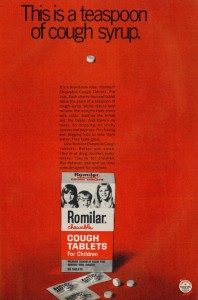Around two weeks ago, we released two new web-based harm reduction tools, aimed particularly around helping users make better dosage choices in unclear situations. The first is a benzodiazepine dosage convertor, and the second a DXM dosage calculator. The tools have already proven popular on Facebook and Reddit, being shared relatively widely.
We’ve also been very pleased with the overwhelmingly positive response to these tools online, particularly the constructive feedback that has allowed us to quickly improve upon the quality of our released tools.
One of the major issues arising from formulaic benzodiazepine conversion is that while these drugs share a class, their effect profiles differ quite a bit. They can range between being consciously almost imperceptible at higher doses (sometimes reported with diclazepam), or intensely hypnotic at lower doses (e.g. flunitrazepam).
While benzodiazepines have different effect profiles, most strike some balance between being anxiolytic, hypnotic, and muscle relaxant. Frequently, people will be quick to measure a benzo’s ‘effectiveness’ by its psychoactive or ‘noticeable’ effects, which are most likely to be its hypnotic effects. This will, however, vary depending on your reason for taking it: a highly anxiolytic benzo is likely to feel most ‘effective’ to a person wishing to abort a panic attack, the muscle relaxant for the user experiencing muscle discomfort, etc.
This, and that drug effects of themselves are highly subjective, means there are some immanent limitations on how accurate a benzo dosage conversion can be. However, they remain useful in the case of benzos with similar effect profiles (or at least a similarity where it concerns a sought-after quality), and for tapering use – since we have used standard base equivalencies to diazepam provided by medical texts to derive comparisons.
After discussing these limitations with users, we have revamped the benzo conversion tool to maximise usability and minimise the possibility for misunderstandings.
- We’ve added a big red notice pointing out that equivalent doses may be inaccurate for larger doses of benzos with different effect profiles.
- Added drug search and aliases (brand names, generic names, and slang).
- Inclusion of cards to compare information about the drugs subject to conversion side-by-side, including base dosage, duration, and effect profile information from our API. Using this comparison, you can evaluate differences in the drug’s effect profile, and see its dose ranges when considered as an individual.
Meanwhile, we’ve also added some clarification text to our DXM tool, and some extra information on potential adulterants that certain formulations may contain. We hope that these changes address the primary concerns with our new tools, and allow for maximum usefulness by prospective users with a minimal risk for misleading results.
We’re also working on additional features for this and other tools, which we look forward to telling you about soon!
Update: Just a reminder that we’re still trying to make contact with HR orgs that use our resources! You can do that here.

 Dextromethorphan (DXM) is a dissociative and hallucinogenic drug which is commonly found in cough medicine; its widespread reputation among popular culture and in some sections of drug culture is that it is a drug of convenience, used only by teenagers without access to illicit drugs, taking advantage of their ability to purchase it over the counter in a pharmacy or order it online. However, among some sects, DXM is respected as a powerful and complex psychedelic which can produce experiences wholly different yet similar in worth and intensity as the more traditional hallucinogens.
Dextromethorphan (DXM) is a dissociative and hallucinogenic drug which is commonly found in cough medicine; its widespread reputation among popular culture and in some sections of drug culture is that it is a drug of convenience, used only by teenagers without access to illicit drugs, taking advantage of their ability to purchase it over the counter in a pharmacy or order it online. However, among some sects, DXM is respected as a powerful and complex psychedelic which can produce experiences wholly different yet similar in worth and intensity as the more traditional hallucinogens.